Apply conditional slot rules
Prerequisites
Knowledge
We recommend that you review the following guide:
Attribute-based merchandising: This guide introduces the Product description and Numeric attribute types. Conditional slot rules use similar attribute types.
Permissions
Ensure you have the Search merchandising editor and/or Categories merchandising editor roles assigned. Your Users admin can assign the role to any user who wants to create or edit conditional slot rules.
Create conditional slot rule
1. Customize Visual Editor to match your site layout
To get visual cues for your merchandising effort, customize the Visual Editor to reflect the number of columns/slots on your website. Under global Product grid settings, specify the number of columns in the Visual Editor.
Follow the steps:
-
Go to Setup > Merchandising > Product grid settings.
-
Use the dropdown to select the number of columns (1-5). Then, click Save.

Now, the Visual Editor mirrors your site’s layout, which lays the visual foundation for the new conditional slot rule.
2. Navigation
- To create a Search query conditional slot rule, go to Merchandising > Site search > Ranking rules.
Alternatively, to create a Category conditional slot rule, go to Merchandising > Categories > Ranking rules. - Click on + New ranking rule.
- Enter the query/category in the Search Terms/Category field. This populates the product grid with product results.
3. Set up conditional rule
-
Click on the Slots tab. Now, click the + Create new slot rule button.

-
Locate and click on the slots you want to control with the conditional rule.
-
Choose any combination of slots. This can be a random selection [slots 2, 4, 8, 9, 15, 16], an ordered selection [slots 1, 2, 3, 4], or just a single slot [slot 1].
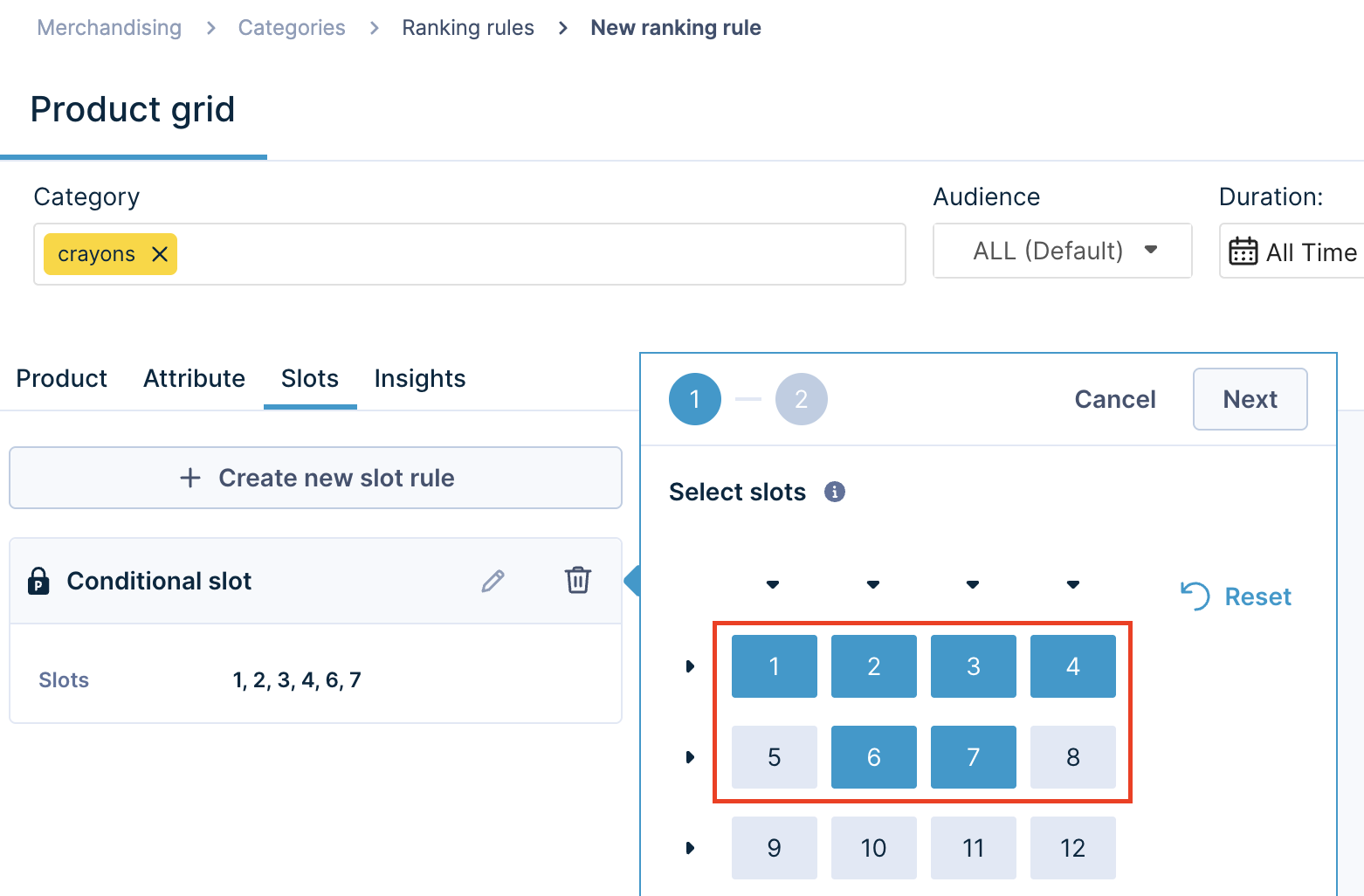
-
Click the corresponding triangle icon to select an entire row or column. You can't select slots that already have a rule in place. Now, click Next.
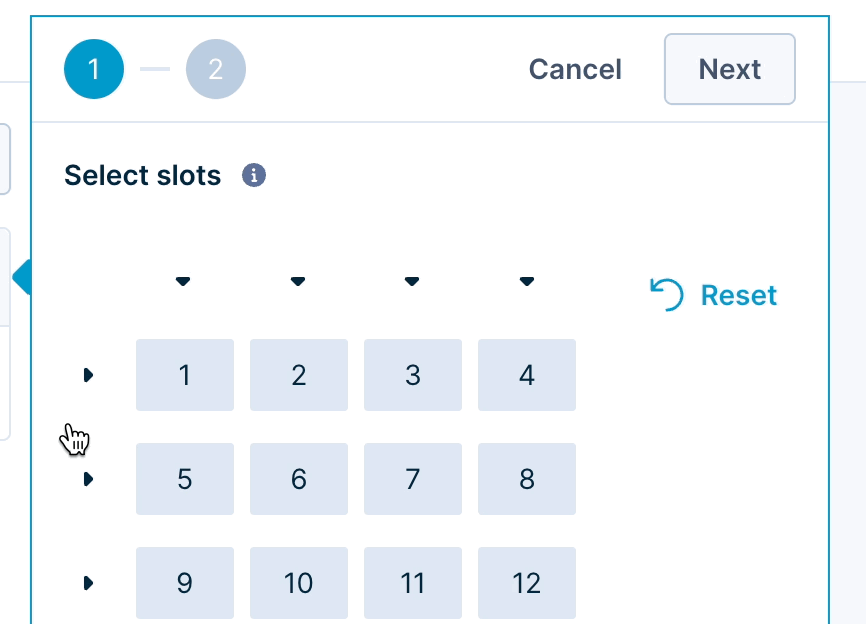
-
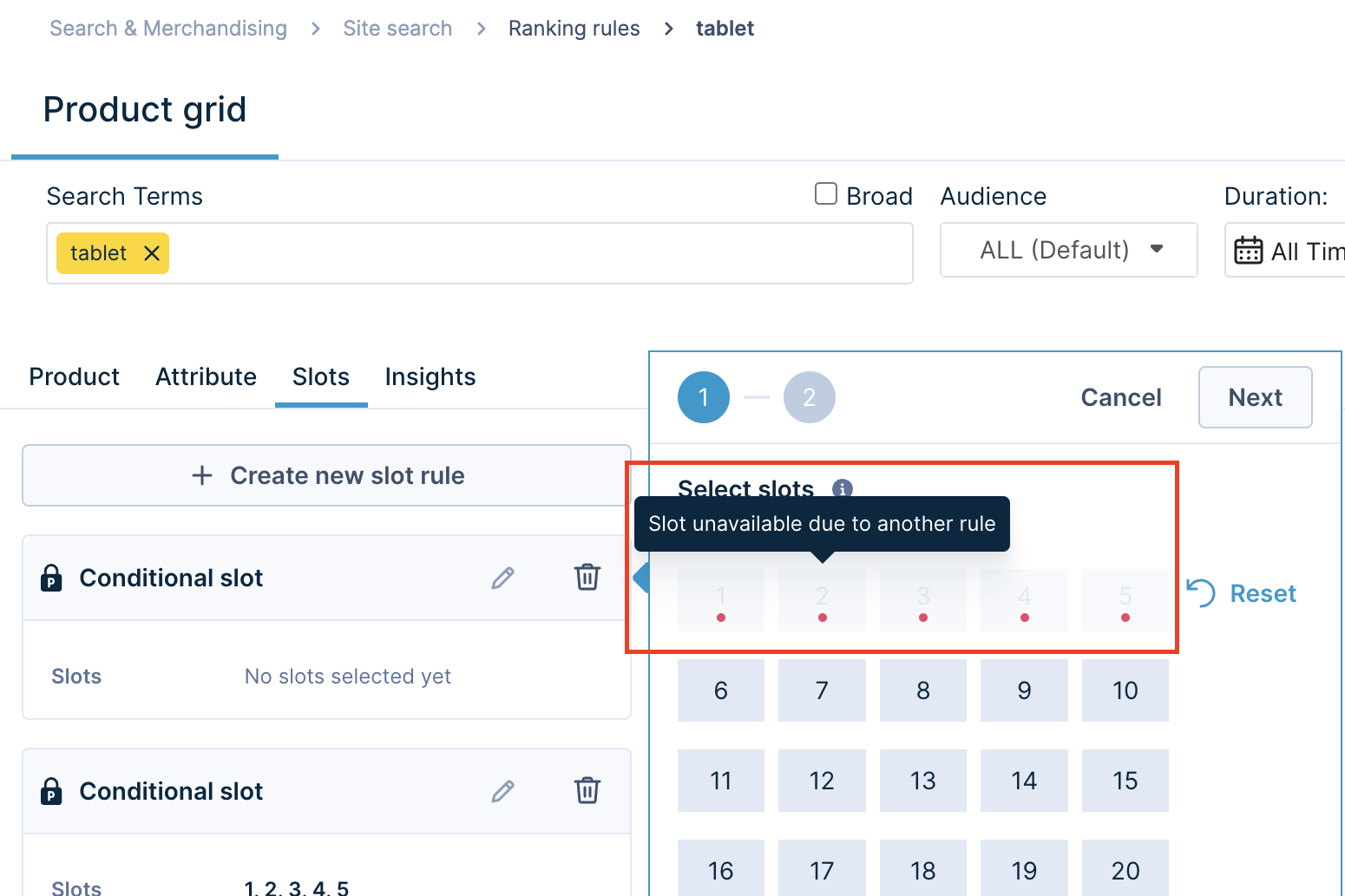
- Specify the conditional rule by selecting the attributes, their values, and the respective conditions. Product description or Numeric attributes are available for selection. You can create conditions for the first 50 slots.
Note
Only Product-level displayable attributes are listed for selection.
Product description attribute conditions
-
Click the grey Product description bubble under the Select attribute(s) label. Choose a description attribute and its value.
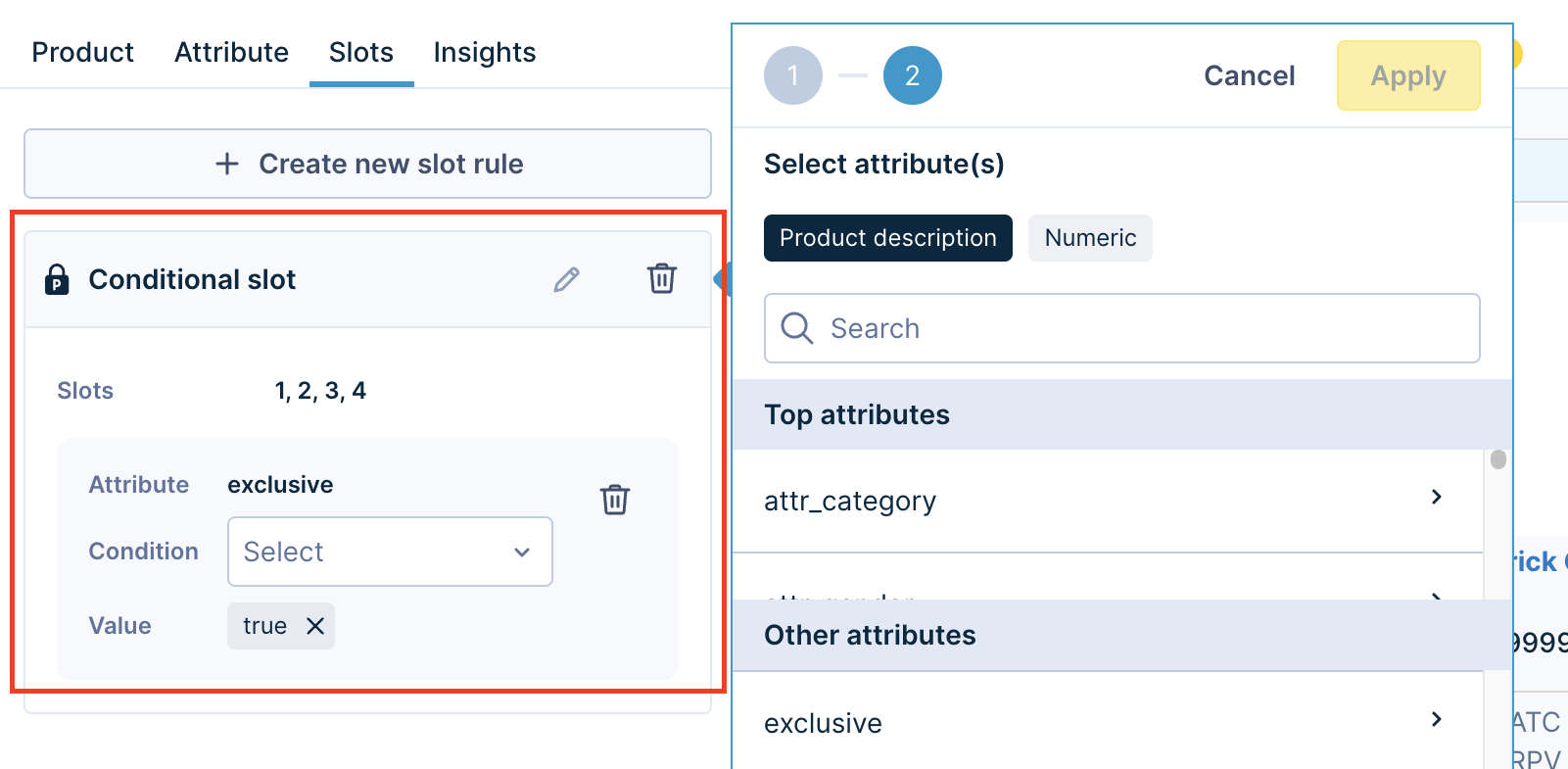
-
Now, specify an attribute condition. You can control whether the rule should match or not match the selected attribute value. The available conditions are: Is equal to, Is not equal to.
Use case: Managing competing brands in the grid
Suppose you want to feature Pacificfashion products. Pacifictrends is a competing brand, and you don’t want their products to appear in adjacent rows with Pacificfashion products. You can set the following conditions:
-
Slot range 1-5: Show products where the brand “attribute” is equal to Pacificfashion. This showcases the products in prime slots.
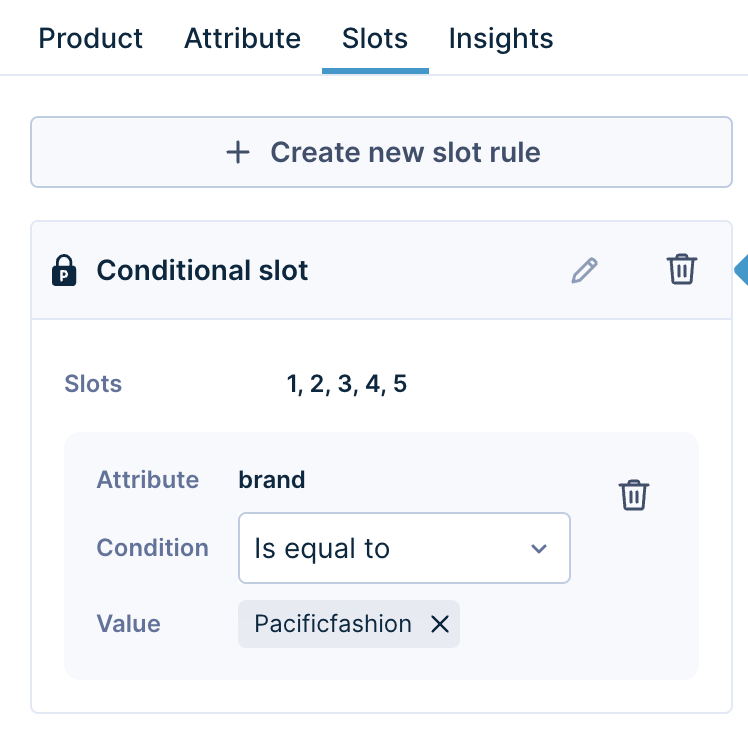
-
Slot range 6-10: Show products where the brand “attribute” is not equal to Pacifictrends. This ensures that competing brands’ products don’t appear next to each other.
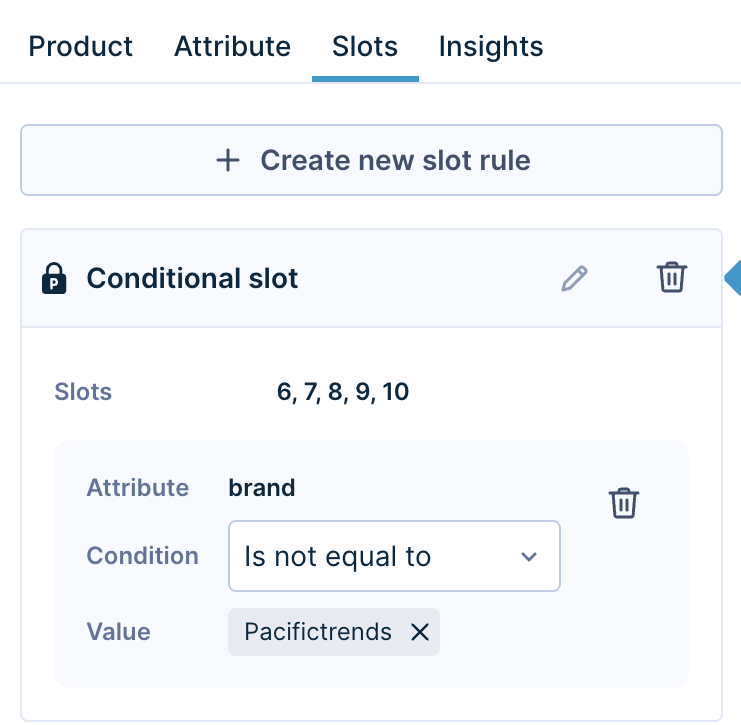
-
-
You can combine two or more description attributes with the AND operation. It is also possible to use the same description attribute multiple times in the same rule.
Here, we are showcasing products under the brand “Homeoasis” that are part of an active promotion. This rule combines two description attributes: promotion_status and brand.
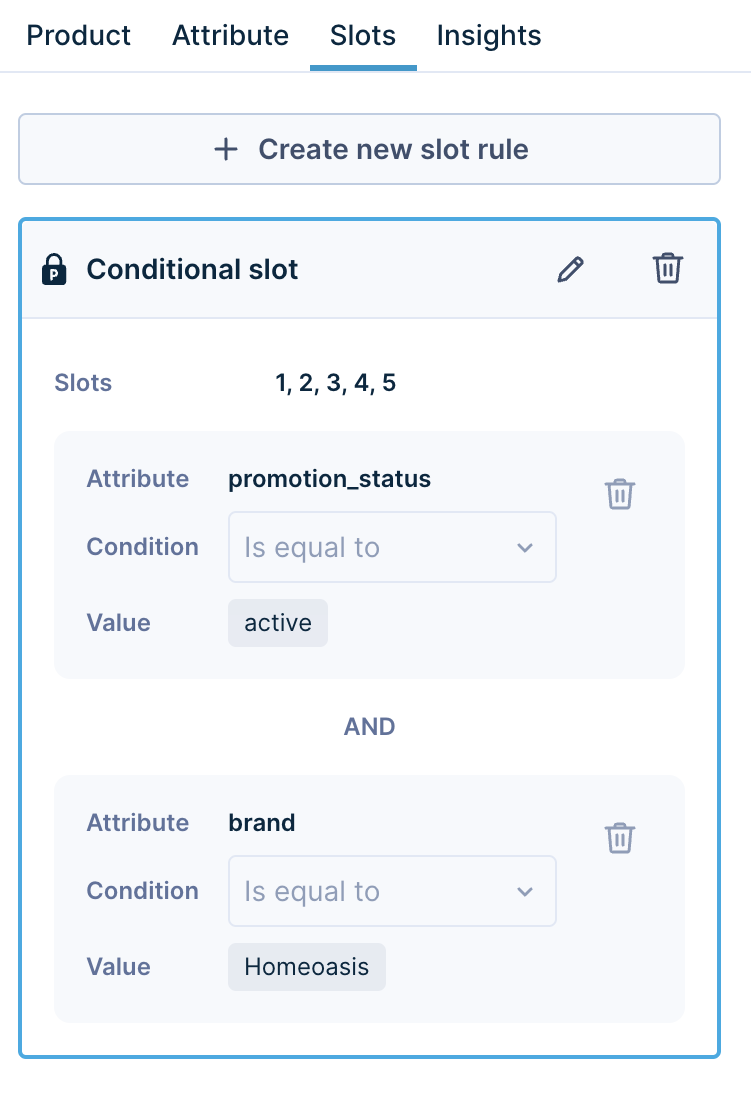
Numeric attribute conditions
-
Under the Select attribute(s) label, click the grey Numeric bubble. Choose a numeric attribute and then input its value.
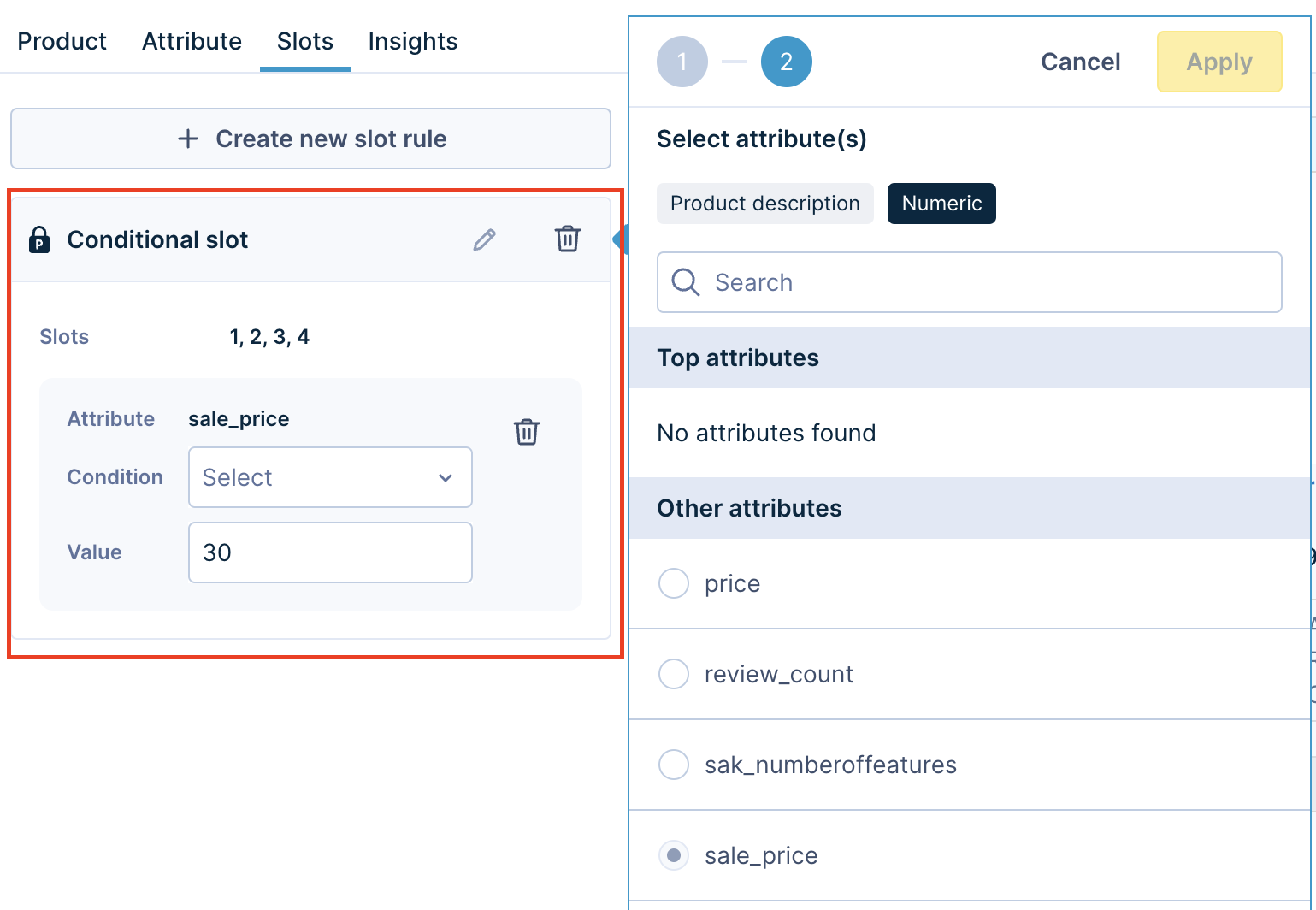
-
Now, specify a numeric attribute condition. The conditions available are: Is equal to, Is not equal to, Is higher than or equal to, Is lower than or equal to, Is in between.
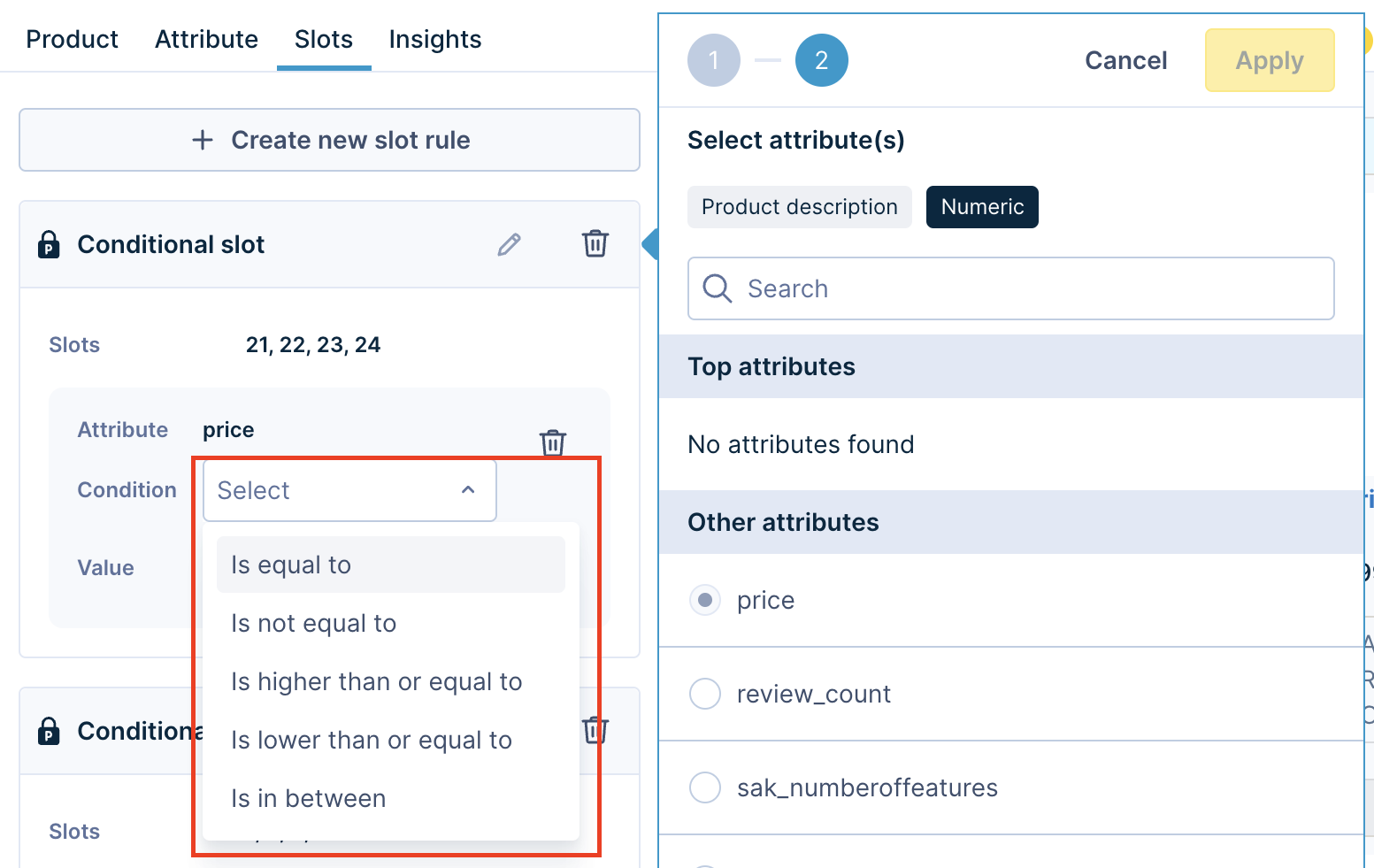
-
You cannot use the same numeric attribute multiple times in the same conditional rule.
-
Click Apply. The selected slot range (highlighted in blue) now shows products per the selected conditional rule. Global rules and the other existing rules influencing the conditional rule are visible under the External Changes tab.

Check the “Operations order and conflict resolution” section to understand how we populate and rank products in the slot range.
4. Preview and save conditional rule
Click the Preview button to view the results with the applied conditional rule.


If you’re satisfied with the results, click Save. The rule will reflect on your site. If you’d like to A/B test the rule instead, click Save new test variant and configure an A/B test .
Manage existing conditional slot rules
You have two options to manage existing conditional slot rules: Edit and Delete.
Edit conditional slot rules
-
Go to the query/category rule you want to modify and click the Edit button.

-
Click the Slots tab to view the conditional slot rules. Now, click the ✎ pencil icon.
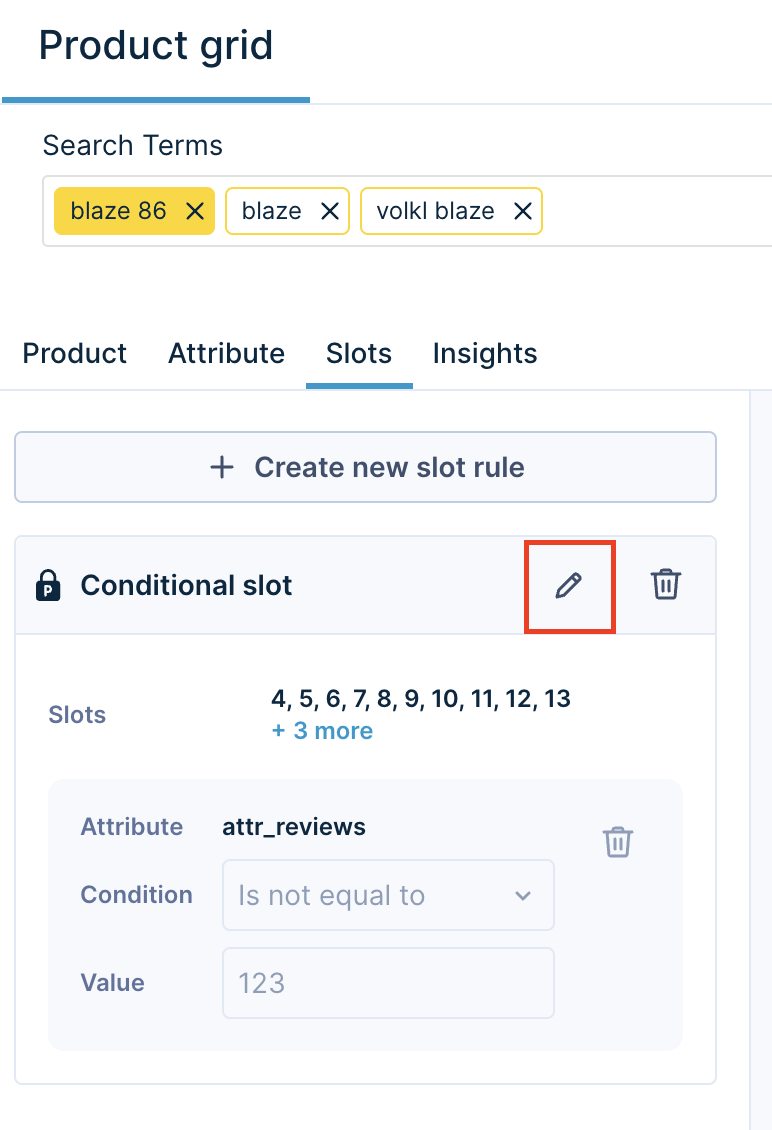
-
Modify the slots, attribute conditions or add new conditions as shown above. Click Apply.
-
Preview the changes and click Save.
Delete conditional slot rules
Go to the conditional slot rule and click the 🗑 bin icon. Now, click Save.
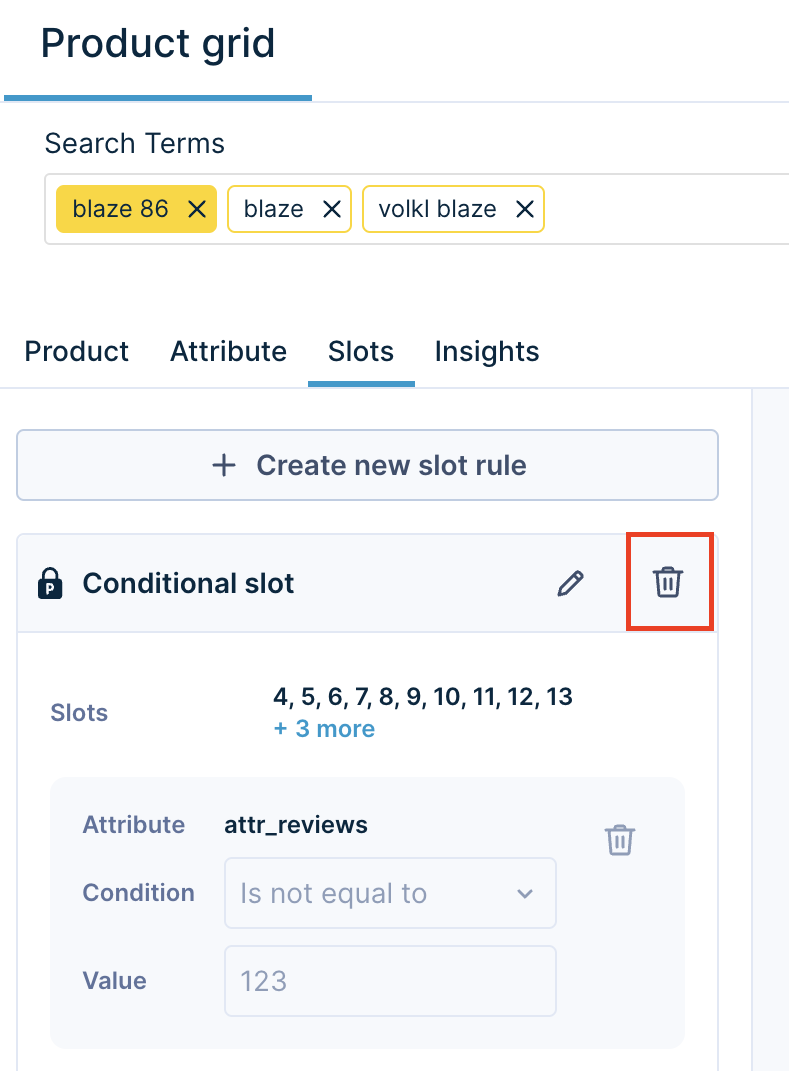
Operations order and conflict resolution
1. How are products populated and ranked in the slot range?
We assign products to their slots after executing the following mechanism:
- We first apply the merchandising operations:
- Ranking rules (attribute boost, attribute bury)
- 1:1 Personalisation rules
- Other re-ranking operations (like Sequential lock, Block product, Bury to bottom, Boost to top, and Lock in place)
- Then, we exclude all products influenced by the other operations:
- Sequentially locked products
- PID boost to top
- PID bury
- PID locked in place
- Excluded products
We now have an algorithmically ranked result set. From the top-ranked 200 products, we pick up to 50 products that fit the conditions for the chosen slot range.
2. How are rules applied when they exist at different context levels?
If there are multiple conflicting rules at different levels, we follow this conflict resolution order:
- Site level rules
- Site group level rules
- Account level rules
Higher-level rules are inherited by the lower levels but can be overwritten. However, an exception exists for PIDs you boost, bury, or lock at the account/site-group level. You cannot override such slots for the conditional rule at the site level.
3. What happens when products fit more than one conditional slot rule?
We match and rerank the products again if they fit more than one conditional slot rule. For example, if you have a conditional slot rule for slots 5-6 and then create a rule for slots 1-2, then the products that were slotted for 5-6 might move to 1-2 if they match the conditions.
Troubleshooting
1. Why do products that don't match the conditional rule appear in my selected slot range?
When there are not enough products that match the defined conditions, the default algorithm temporarily fills the conditional slots with alternative top-ranking products.
2. How can I debug a conditional slot rule?
Use Product grid insights to identify which products are impacted by conditional rules. This will help you in debugging rules.
3. What happens when a product in the conditional slot range is out of stock?
If any product that fits in a conditional rule slot goes out of stock/disappears, the default algorithm populates the slot with the next top-ranking product.
Updated 3 months ago
